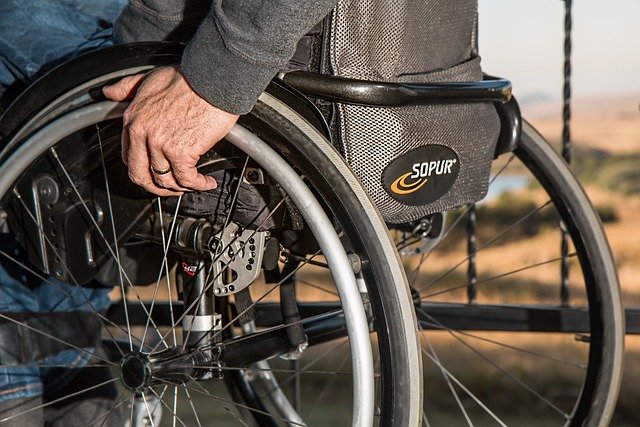Overview of Food Packaging Jobs and Opportunities for English Speakers in Hamburg
English-speaking individuals living in Hamburg may be interested in learning more about the food packing sector. This field includes a range of tasks related to the preparation and packaging of food products. Understanding workplace conditions and job expectations can offer helpful insights for those considering a career in this area.

Food packaging roles in Hamburg sit at the intersection of manufacturing and logistics. Facilities range from small specialty producers to high-throughput plants and distribution centers that prepare goods for retailers, hospitality, and e-commerce. For English speakers, these roles can be accessible when tasks are standardized, teams are well-structured, and instructions are documented clearly. Understanding how the sector works, which skills matter, and how employment is organized helps you evaluate whether this path aligns with your background and expectations.
Understanding the Food Packing Sector in Hamburg
Hamburg’s position as a major port and logistics hub supports a large ecosystem of food producers, importers, and distributors. Packaging tasks vary widely: primary packing (placing items into their first wrapper or container), secondary packing (boxing, bundling, and shrink-wrapping), labeling and barcoding, kitting for retail displays, and preparing mixed orders for shipment. Quality checks are integral at each step, ensuring packaging integrity, correct weights, and accurate labels.
Many sites follow established food safety frameworks such as HACCP and internationally recognized certifications (e.g., IFS or BRC). These standards influence daily routines: handwashing protocols, hair and beard coverings, clean-room clothing, and allergen controls. Temperature-controlled areas are common, including chilled rooms for fresh goods and ambient zones for dry products. Workflows can be highly structured, with standard operating procedures (SOPs), visual work instructions, and batch documentation that guide each shift.
Seasonal fluctuations can affect workload planning, with peaks around holidays or product launches. Facilities often coordinate closely with logistics providers to align packing runs with transport windows. While entry-level roles typically focus on repetitive tasks, opportunities to broaden responsibilities can arise through cross-training on machinery such as sealing units, flow-wrappers, or automated labelers. Progression generally depends on reliability, adherence to hygiene rules, and consistent quality performance rather than formal seniority alone.
Language Requirements and Skills for Food Packing Roles
Language expectations differ across sites and teams. Some tasks rely heavily on visual instructions, color codes, and symbols, which can support English speakers. However, basic German is helpful for safety briefings, incident reporting, and understanding rapid changes during shift handovers. Learning simple workplace phrases, numbers, and packaging terms can make daily work smoother and safer.
Core skills include manual dexterity for precise packing, attention to detail for batch numbers and expiry dates, and the endurance to stand, bend, and move items during an entire shift. Familiarity with barcode scanners, handheld terminals, and basic arithmetic supports accurate order picking and carton counts. Reliability—arriving on time, following SOPs, and documenting correctly—is often a decisive factor in performance reviews.
Food handling typically requires a hygiene briefing under German regulations (often referred to as an initial instruction under the Infection Protection Act before starting work with unpackaged foods). Employers usually provide site-specific training that covers contamination risks, allergen separation, waste disposal, and personal protective equipment (PPE) usage. Additional qualifications can be advantageous, such as a forklift permit when roles involve pallet movements or experience with automated packing lines.
Working Conditions and Employment Structures
Work environments differ by product type. In chilled rooms, temperatures are low to protect freshness, so layered clothing under PPE is common. In dry-goods areas, the focus may be dust control and ergonomic lifting. Across settings, PPE often includes gloves, hairnets, beard nets, protective footwear, and high-visibility clothing. Teams coordinate on takt times, with defined rest breaks and documented changeover procedures between product runs to prevent cross-contamination.
Shifts may be early, late, or night, depending on production schedules and transport slots. Weekend or holiday work can occur during busy periods. German workplace rules emphasize safety, rest periods, and proper onboarding for new tasks. Depending on the facility, a works council (Betriebsrat) may be present to represent employee interests, and many sites maintain clear channels for reporting hazards or near-misses to improve safety culture.
Employment arrangements vary. Some people are hired directly by manufacturers or distributors, while others work through temporary staffing (Zeitarbeit) on fixed-term or project-based assignments. Part-time schedules are common in certain packing lines, and casual or short-hour roles can exist for peak periods. In most cases, site inductions cover access rules, locker procedures, hygiene checks, and documentation standards. Local services in your area—such as language courses or vocational training centers—can help build communication skills that make teamwork and advancement easier over time.
Conclusion Food packaging in Hamburg brings together structured processes, hygiene discipline, and coordinated teamwork. For English speakers, the clarity of SOPs, the prevalence of visual instructions, and employer-led hygiene training can make entry feasible, while basic German expands options and confidence. Understanding the workflows, safety culture, and employment setups helps you assess whether the day-to-day realities match your skills and preferences in this practical, process-driven segment of the food industry.




